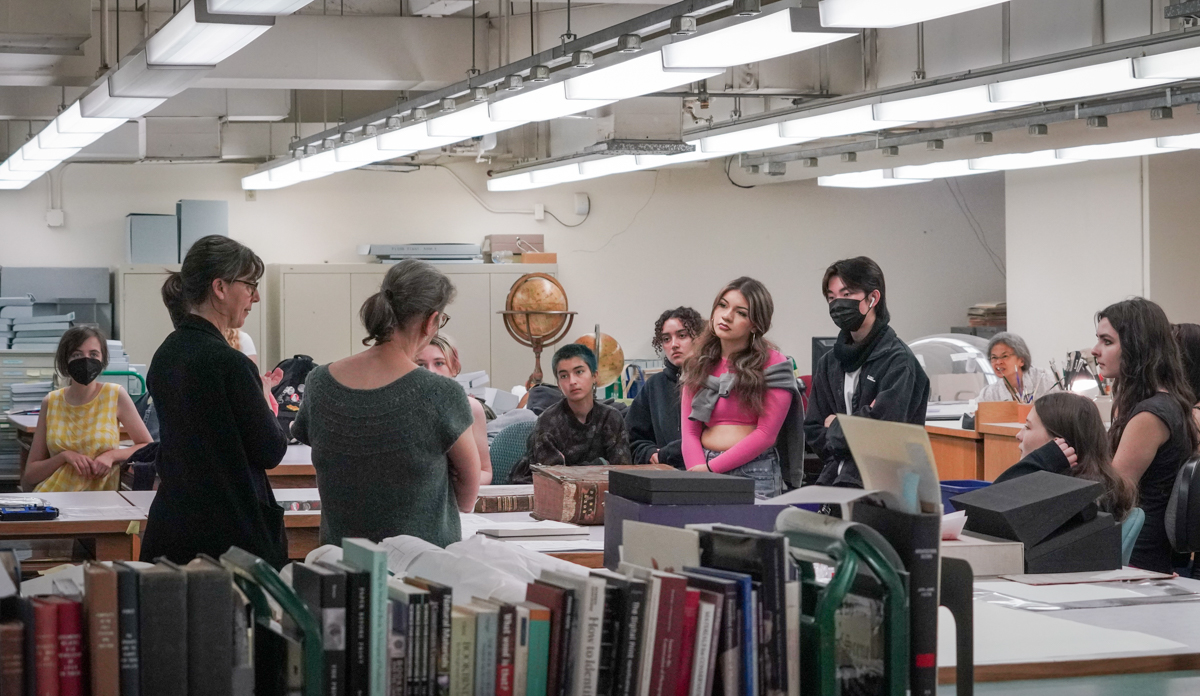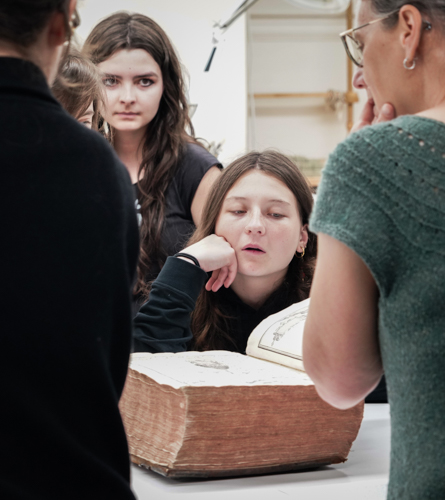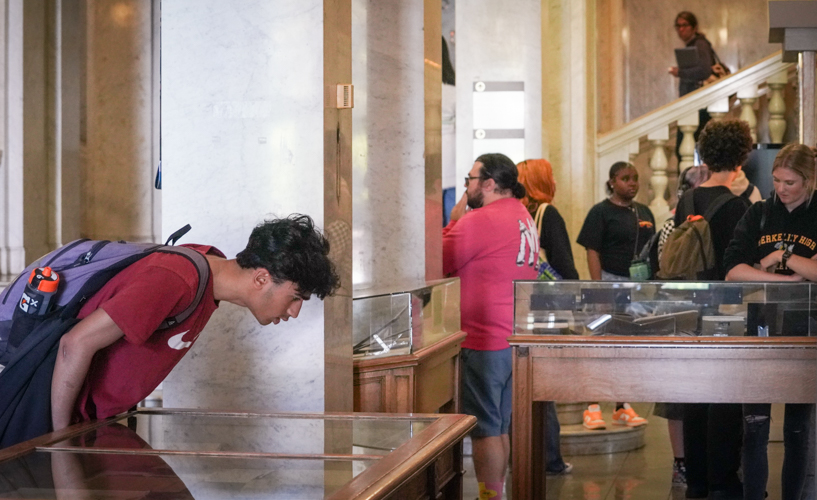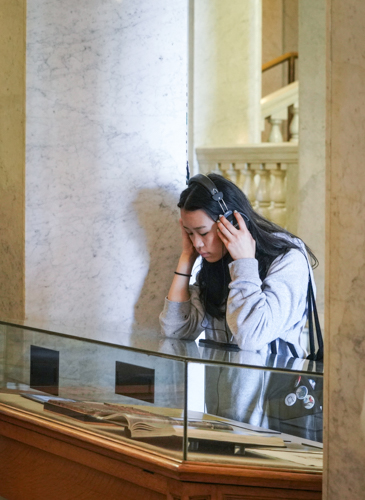
The students shuffled into the room like first-years at Hogwarts School of Witchcraft and Wizardry — tentative but curious.
To be fair, the Conservation Treatment Lab at the UC Berkeley Library is kind of a magical place. Filled with fantastic gadgets, the lab is where conservators extend the lives of books and other artifacts.
On this day, however, the 15 would-be wizards — students from a chemistry class in the Arts and Humanities Academy at Berkeley High School — weren’t gathered for a crash course on charms or potions, but rather a presentation on the science of preservation. The field trip was one part of a multifaceted academic project designed to help the students consider the practical application of science within the world of art.

Hannah Tashjian, the head of the Library’s Preservation Department, and fellow conservator Erika Lindensmith discussed the chemical reactions that cause materials to decay, through temperature, humidity, light, and pollution, and how to prevent deterioration.
“Those things might not cause a lot of damage right away,” Tashjian said. “But the cumulative effect over time could mean that you lose something irreplaceable — it means losing part of our history.”
Mers Tran, a student teacher for the class who is studying in the Berkeley Teacher Education Program, said the high schoolers were impressed by the presentation. They were particularly intrigued to see a 17th-century copy of the King James Bible, according to Tran.
The massive tome, which one student compared to the screaming book Harry Potter encounters in the Hogwarts library, is one of the artifacts Tashjian and her team have worked on recently. Lindensmith explained that modern Bibles, in contrast to the copy from 1611, are printed on very thin paper to keep volumes slim and portable. The conservators also showed the students a 13th-century manuscript of Arthurian legends, among other items.
Christopher Hondros, the students’ lead chemistry teacher, said the field trip was an excellent complement to the overarching class project. The project mimicked the process of putting together a grant application for artwork to be displayed in a museum, in particular the scientific considerations. The students, whose primary academic focus is art, were asked to consider questions such as how the behavior of gases and chemical reactions might affect the art on display.
“While students can do a project and somewhat see what the vision is, a field trip where they can make those observations directly, and have experts show their craft and passion, opens brand-new opportunities to them,” he said.


Hondros developed the project over multiple years, while Tran and fellow student teacher Mellony Li helped arrange the Library visit. While on campus, the 60 students were split into three groups. They visited the lab and took in two exhibits — Visualizing Place: Maps from The Bancroft Library and Letters | الحروف: How Artists Reimagined Language in the Age of Decolonization. Exhibit tours were led by José Adrián Barragán-Álvarez, Bancroft’s curator of Latin Americana, and Mohamed Hamed, the Middle Eastern and Near Eastern studies librarian, respectively.
For Tashjian, who has been eager to develop a relationship with Berkeley High School for some time, the visit was also an opportunity to introduce students to the many facets of the Library — and a career path that mixes craft, chemistry, and a little magic.
“Most people … don’t know very much about conservation,” she said. “And a lot of people find out about it at a point when they think it’s too late for them to pursue. So I wanted to let (the students) know that this profession exists and just open their eyes to the possibilities.”